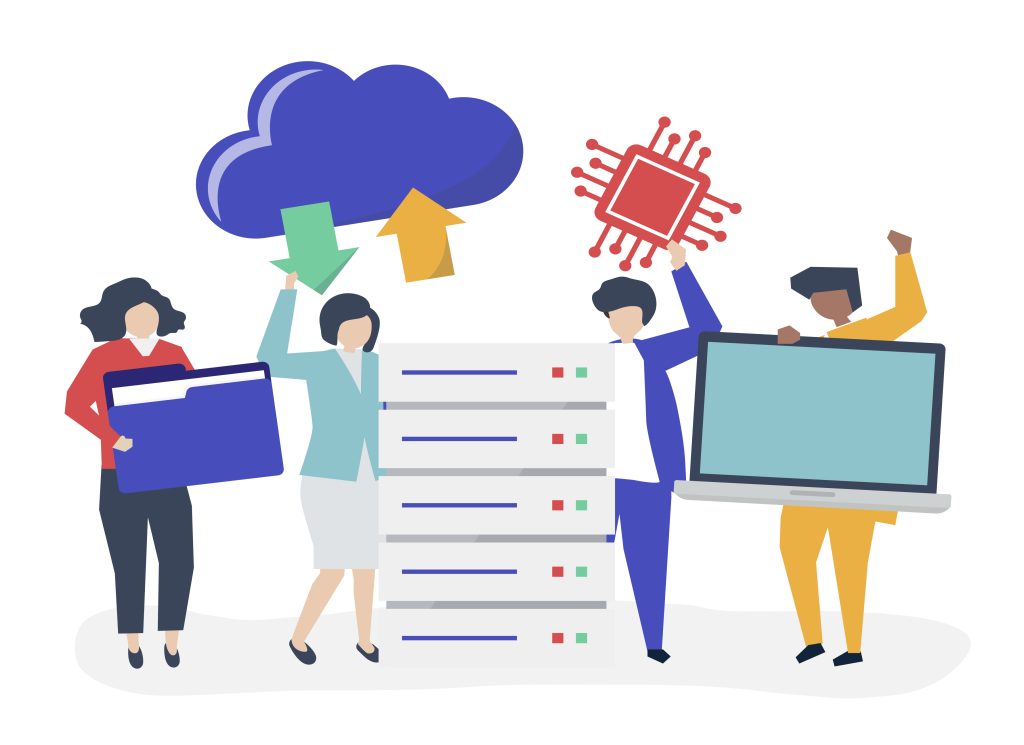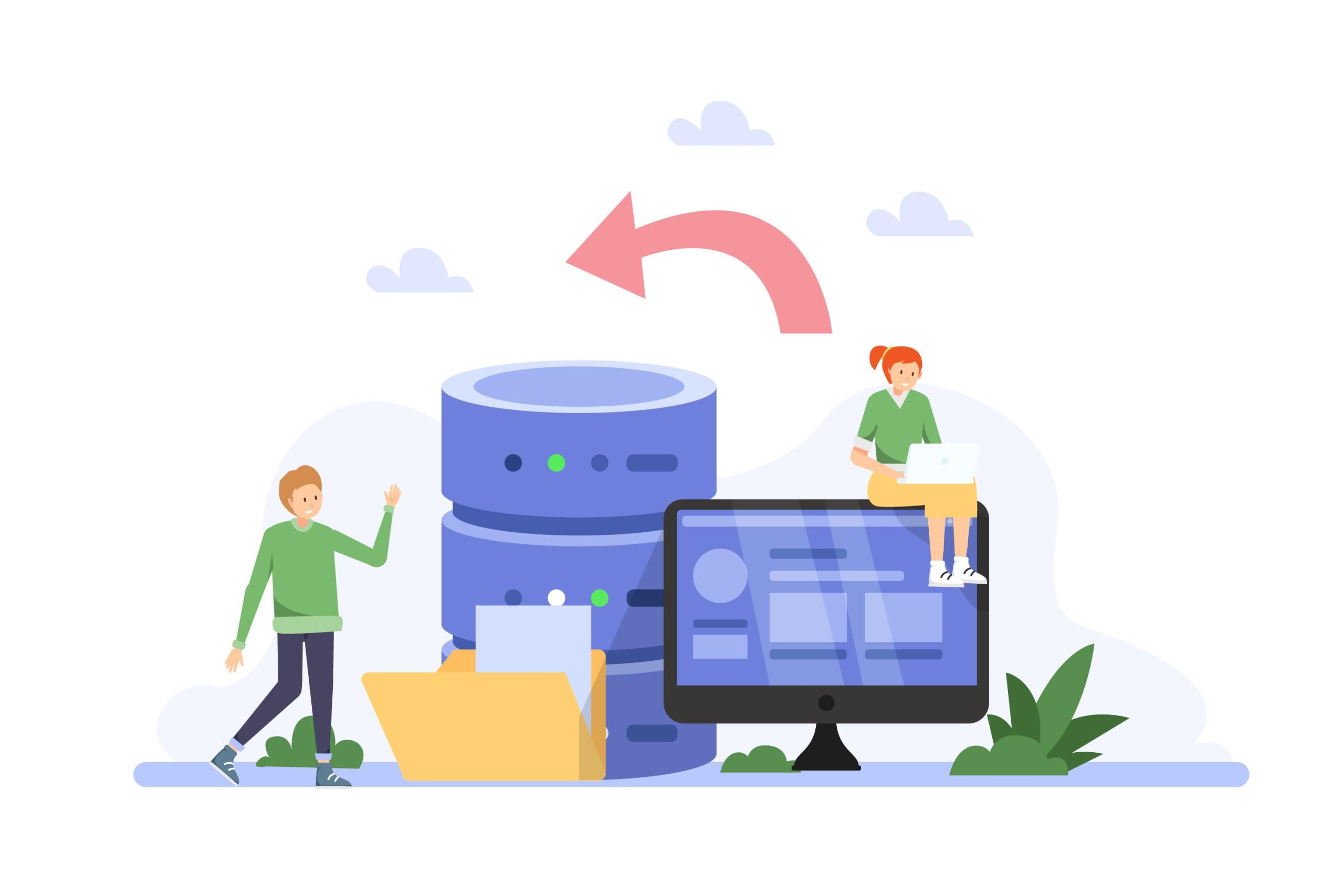Data migration is a critical process for businesses that need to transfer their data from one system to another. Open-source data migration tools have gained popularity due to their flexibility, cost-effectiveness, and community support. Choosing the right tool for your data migration needs can be a daunting task. To help you make an informed decision, here we will discuss factors to consider when choosing open-source data migration tools top open-source tools for data migration that offer flexibility, robust features, and cost-effectiveness. Whether you are a small business or a large enterprise, these factors will guide you in selecting the most suitable tool for your data migration project.
The Importance of Database Migration
Data migration involves the transfer of data from one storage system to another, such as from an on-premises server to the cloud or from one cloud provider to another. It is a critical process that requires careful planning and execution to ensure the integrity, security, and accessibility of the data. Proper data migration allows businesses to leverage new technologies, improve performance, and optimize their operations.
Factors to Consider When Choosing Open-Source Database Migration Tools

1. Compatibility and Integration
To ensure a smooth data migration process, it is essential to choose a tool that is compatible with your existing systems and technologies. Consider whether the tool supports the formats, protocols, and databases used in your environment. Additionally, check if the tool integrates seamlessly with other software applications you rely on for your business operations.
2. Ease of Use
Data migration can be a complex task, so selecting a tool that is easy to use is crucial. Look for tools with intuitive user interfaces, clear documentation, and comprehensive tutorials. The tool should streamline the migration process and minimize the need for manual intervention, ultimately saving you time and effort.
3. Scalability
Consider the scalability of the data migration tool. Will it be able to handle your current data volume, as well as accommodate future growth? Ensure that the tool can scale up or down based on your evolving data migration requirements.
4. Performance and Speed
Data migration can be a time-consuming process, so it is important to choose a tool that offers high performance and speed. Look for tools that utilize efficient algorithms and parallel processing to minimize the migration time. This will help you reduce downtime and ensure a smooth transition.
5. Data Security
Data security is paramount during the migration process. Choose a tool that employs robust encryption methods and follows industry best practices for data protection. Additionally, ensure that the tool offers features like data validation and integrity checks to safeguard the accuracy and completeness of your migrated data.
6. Community Support
Open-source data migration tools benefit from the support of a vibrant community of developers and users. Consider the size and activity of the tool’s community. A strong community ensures continuous development, timely bug fixes, and access to a wealth of knowledge and resources.
7. Customization Options
Every data migration project is unique, so having the ability to customize the tool to suit your specific needs is invaluable. Look for tools that provide customization options, such as the ability to write custom scripts or extend the tool’s functionality through plugins and extensions.
8. Documentation and Support
Comprehensive documentation and reliable support are essential when using open-source tools. Ensure that the tool you choose has detailed documentation that covers installation, configuration, and troubleshooting. Additionally, check if the tool offers professional support services or has an active user forum where you can seek assistance from the community.
9. Costing
One of the significant advantages of open-source data migration tools is their cost-effectiveness. it is essential to evaluate the total cost of ownership, taking into account factors such as training, support, and maintenance. Compare the costs of different tools and consider the value they provide in relation to your specific requirements.
10. Data Validation and Error Handling
Data integrity is crucial during the migration process. Look for tools that offer robust data validation mechanisms to ensure the accuracy and consistency of your migrated data. Additionally, consider how the tool handles errors and exceptions during the migration process and whether it provides detailed error logs for troubleshooting.
11. Data Transformation Capabilities
Data may need to be transformed or modified during the migration process to match the target system’s requirements. Choose a tool that offers comprehensive data transformation capabilities, such as data mapping, data cleansing, and data enrichment. These features will help you ensure that your migrated data is usable and compliant with the target system.
12. Data Governance and Compliance
Data governance and compliance are critical considerations for businesses dealing with sensitive data or operating in regulated industries. Choose a tool that supports data governance practices and helps you adhere to relevant data protection regulations. Look for features such as data masking, anonymization, and auditing to ensure compliance with privacy and security standards.
13. Performance Monitoring and Reporting
Monitoring the performance of your data migration process is essential to identify bottlenecks, optimize resource utilization, and track progress. Select a tool that provides performance monitoring and reporting capabilities, such as real-time metrics, dashboards, and alerts. These features will help you stay informed and make data-driven decisions during the migration.
14. Vendor Stability and Longevity
When choosing an open-source data migration tool, consider the stability and longevity of the vendor or community behind the tool. Look for tools that have been actively maintained and regularly updated. This ensures that you can rely on ongoing support, bug fixes, and compatibility with future technologies.
15. User Reviews and Reputation
Take the time to research user reviews and evaluate the tool’s reputation in the industry. Look for testimonials and case studies from users who have successfully used the tool for data migration projects. This will provide insights into the tool’s strengths, weaknesses, and overall user satisfaction.
Best Open Source Tools for Database Migration

Whether you are upgrading your systems, moving to a new platform, or consolidating data from multiple sources, having the right tools can streamline the process and minimize the risk of data loss or corruption. These tools are trusted and widely used by professionals in the industry, making them an excellent choice for your data migration needs.
1. Talend Open Studio
Talend Open Studio is a powerful data integration tool that supports various data migration scenarios. It offers a user-friendly interface, supports multiple data sources, and provides extensive data transformation capabilities.
2. Apache Kafka
Apache Kafka is a distributed streaming platform that can handle high volumes of data efficiently. It provides reliable and scalable data migration capabilities, making it suitable for real-time data integration.
3. Pentaho Data Integration
Pentaho Data Integration is a comprehensive open-source tool that enables seamless data migration between different systems. It offers a visual interface for designing data integration workflows and supports a wide range of data formats.
4. Liquibase
Liquibase is a popular open-source tool for managing and automating database schema changes. It simplifies the process of migrating database schemas and ensures data consistency throughout the migration process.
5. Apache Nifi
Apache Nifi is a powerful data integration platform that supports data routing, transformation, and system mediation. It offers a web-based user interface and allows easy configuration of complex data migration workflows.
6. Flyway
Flyway is a database migration tool that focuses on simplicity and ease of use. It supports automated database schema evolution and version control, making it an excellent choice for managing database migrations.
7. DataGrip
DataGrip is a feature-rich database IDE that offers powerful data migration capabilities. It supports a wide range of databases and provides an intuitive interface for managing and executing data migration scripts.
8. Apache Sqoop
Apache Sqoop is a tool designed for efficiently transferring bulk data between Apache Hadoop and structured data stores such as relational databases. It simplifies the process of importing and exporting data, making it ideal for big data migration projects.
9. Talend Data Integration
Talend Data Integration is a comprehensive data integration platform that offers a wide range of data migration features. It supports real-time data integration, and data quality management, and provides extensive connectivity options.
10. PostgreSQL
PostgreSQL is a powerful open-source database management system that includes built-in data migration capabilities. It supports a wide range of data types and offers advanced features for data manipulation and transformation.
11. Apache Storm
Apache Storm is a distributed real-time computation system that can be used for data migration in high-throughput environments. It provides fault tolerance and scalability, making it suitable for large-scale data migration projects.
12. Kettle
Kettle, also known as Pentaho Data Integration, is a powerful open-source ETL (Extract, Transform, Load) tool. It offers a graphical interface for designing data migration workflows and supports a wide range of data sources and destinations.
13. Apache NiFi
Apache NiFi is a data integration tool that provides powerful data routing, transformation, and mediation capabilities. It offers a web-based user interface and supports real-time data streaming, making it ideal for data migration projects.
14. Talend Open Source
Talend Open Source is a popular data integration platform that offers extensive data migration capabilities. It provides a wide range of connectors for various data sources and supports batch and real-time data integration.
15. Apache Beam
Apache Beam is a unified programming model for executing both batch and streaming data processing jobs. It provides a portable and flexible framework for data migration, making it suitable for complex data migration scenarios.
16. Apache Flume
Apache Flume is a distributed, reliable, and available system for efficiently collecting, aggregating and moving large amounts of log data. It can be used for data migration by ingesting data from various sources into a centralized data store.
17. Splice Machine
Splice Machine is a distributed SQL database that offers built-in data migration capabilities. It combines the scalability of Hadoop and the performance of traditional databases, making it an excellent choice for big data migration projects.
18. Talend Integration Cloud
Talend Integration Cloud is a cloud-based data integration platform that offers comprehensive data migration capabilities. It provides a scalable and secure environment for managing data integration workflows.
19. MySQL Workbench
MySQL Workbench is a visual database design and modeling tool that includes data migration features. It supports various database management systems and provides a user-friendly interface for executing data migration scripts.
20. Apache Airflow
Apache Airflow is a platform for programmatically authoring, scheduling, and monitoring workflows. It provides a rich set of tools for data migration, including task dependencies, retries, and error handling.
FAQs
When selecting a data migration tool, it’s essential to consider factors such as ease of use, compatibility with your existing systems, scalability, data integrity features, and community support. Additionally, consider the tool’s performance, security, and availability of documentation and tutorials.
Open-source data migration tools have gained significant popularity and are widely used in the industry. They are known for their reliability, robust features, and active community support. The choice between open-source and commercial tools depends on specific requirements and budget considerations.
Yes, many data migration tools are designed to handle large volumes of data efficiently. These tools often employ parallel processing techniques, compression algorithms, and optimized data transfer protocols to ensure high-performance data migration.
Data migration carries inherent risks such as data loss, data corruption, and system downtime. with proper planning, testing, and the use of reliable data migration tools, these risks can be minimized. It’s crucial to have a backup strategy in place and perform thorough testing before executing a data migration.
Yes, data migration tools often include powerful data transformation capabilities. They allow you to map and transform data from the source to the target system, ensuring compatibility and data integrity during the migration process.
To ensure data security during the migration process, it’s important to use secure protocols for data transfer, encrypt sensitive data, and follow best practices for access control and authentication. Consider implementing data masking or anonymization techniques to protect sensitive information.
Yes, open-source data migration tools often support multiple sources and can handle data migration from various databases, file formats, and systems. Ensure that the tool you choose supports the specific sources you need to migrate data from.
Yes, open-source data migration tools can handle large-scale data migration projects. it is important to choose a tool that offers scalability, performance optimization, and efficient handling of large data volumes.
To ensure data security during the migration process, choose a tool that provides encryption, data validation, and integrity checks. Follow best practices for secure data handling and consider implementing additional security measures, such as access controls and user authentication.
Yes, open-source data migration tools often provide customization options. You can write custom scripts, create plugins, or extend the tool’s functionality to meet your specific requirements.
While open-source data migration tools are generally free to use, there may be additional costs associated with training, support, and maintenance. Evaluate the total cost of ownership and consider the value the tool provides in relation to your specific needs.
If you encounter errors or issues during the data migration process, refer to the tool’s documentation and seek assistance from the tool’s support services or the user community. Detailed error logs and troubleshooting guides can help you identify and resolve issues effectively.
Conclusion
Choosing the right open-source data migration tool is crucial for the success of your data migration project. By considering factors such as compatibility, ease of use, scalability, performance, data security, and community support, you can make an informed decision. Do not forget to assess your specific requirements, compare different tools, and gather insights from user reviews. With the right tool at hand, you can streamline your data migration process and ensure a smooth transition to your new system.
































































